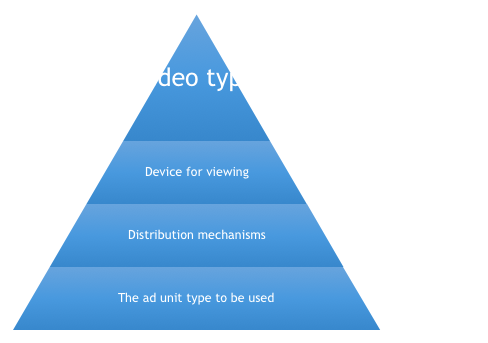There is a dire need to reduce the revenue generation gap in the multifaceted digital landscape of video publishing. Both, advertising agencies and broadcasters need to change their mindset towards its rising demands. They will have to understand how current media advertising solutions can be leveraged to get revenues. Ad insertion services continue to evolve as consumer behavior makes a tectonic shift to mobile devices.
Market For Advertising In The Digital Video Landscape:
By now, most broadcasters and small cable operators have made the switch to digital networks and offer online platforms to their consumers. Globally, end users are hooked on to the smartphones for entertainment, information, and news. Watching videos on small screens is mainstream and will continue to proliferate various content consumptions across the world. As content becomes personalized so do the advertising online. There is no other choice for broadcasters and agencies but to adopt the emerging business models of media advertising. There are benefits that can be accrued as the new eco-system replaces the older patterns. The marketing teams can find opportunities with proper decisions based on planning, pricing, and close revenue generation gaps. Software-enabled products designed to tap requirements for dynamic ad insertion and on-demand OTT. But to actually monetize the efforts and software apps let’s first understand the current video market scenario.
Four divisions need to be understood.
1. The video type which is being used is important to discern. It could be long or short form. It could be user-generated, original, vertical, 360-degree, virtual reality, or even live video. The type being used will require ad insertion which the user can relate to. The solution could offer an opportunity for server-side ad insertion, resistance from ad blocks, uniform ad stitching, or mechanisms that can be embedded for ad tracking and the number of impressions it makes when the user is viewing the content.
2. Distribution mechanisms take care of methods by which the content reaches the consumers. It could be via broadcasting/on-air, cable, satellite, or it could be IP-based. Either way, the customer gets a unique experience watching the videos. The media advertising solutions based on these mechanisms will offer revenue generation ideas. Depending on the distribution the localized content will attract specific advertising. It focuses on target audiences in a particular geo-region or with people who have similar tastes and behavior.
3. The Device for viewing or platform is yet another factor to be considered when choosing the software app to maximize returns. Today multi screens like gaming, consoles, desktops, mobile phones, OTT, or connected television are used. It also extends to social messaging apps and digital OOH. The screen size no longer matters the consumer is able to view on various devices. It offers excellent opportunities for advertising which can be tailor-made for viewers.
4. Which ad unit to use? It could be an outlay, in the stream, or even overlay. The digital landscape has widened its net, and consumers are spoilt for choice. In either way, they can be engaged once the connection is made.
Difficult To Ignore OTT Or Streaming Services:
As the world gets closer via the internet, it is difficult to ignore OTT or live streams of various segments of content that consumers view. Most publishers and agencies have to switch to server-side ad insertions. Ad agencies now need to get their clients to push their brands through these mediums. Smartphone device viewing now constitutes 54% of content expression almost all over the world. On several digital platforms, ad blocking is also gaining traction. The only way agencies can continue to resist these aberrations are through server-side ad insertions. Software apps that challenge the ad blocks are being used. Publishers can now team up with vendors who provide such media solutions to counter the new challenges. The ad-supported content can now be personalized and few vendors offer support to publishers, agencies, and broadcasters to install the most capable software.
Ads Can Be Non – Intrusive:
Most consumers do not mind if they get to see their favorite brands online while viewing content. The software allows viewers to see only ads that they like. Previous data can be analyzed to know which ads can be relayed to target consumers. The data could be via the region or viewing preferences. This way the ads do not disturb the viewers’ interest in the story they are watching online. Vendors offer software apps that do not require any integration with the browser or the device. This simplified route works for the distributors, broadcasters, and the consumers.











